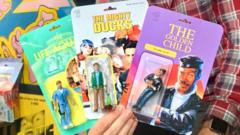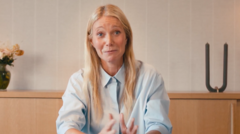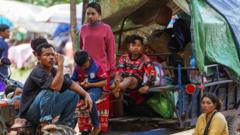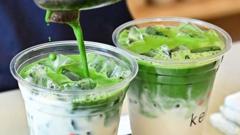As AI technology generates customizable dolls from user-uploaded photos, artists express frustration over the trend's impact on creativity and job security, rallying under the #StarterPackNoAI movement.
Artists Rally Against AI-Doll Trend, Concerned for Creative Futures

Artists Rally Against AI-Doll Trend, Concerned for Creative Futures
The rise of AI-generated dolls sparks pushback from artists fearing for their livelihoods as concerns over originality intensify.
The landscape of art and creativity is shifting dramatically as the trend of creating personalized AI-generated dolls gains traction. Since April, many have eagerly shared their photos to generate toy-like images of themselves, leading to a rising number of artists concerned about their livelihoods and the authenticity of their work.
Custom action figure creator Nick Lavellee has been crafting unique figures for six years and sees the saturation of AI-generated images as a threat to his artistry. “It’s an artistic aesthetic—AI-generated art diminishes that,” he shares, explaining his fear that commissions for his handcrafted dolls may decline due to the overwhelming influx of generated images on social media.
The #StarterPackNoAI movement has emerged as a counterforce among artists, rallying against the trend of AI replication. Artist Maria Picassó Piquer emphasizes the uniqueness of human creations compared to AI outputs, noting that self-portraits imbue art with a layer of humanity.
Similarly, illustrator Dav le Dessineux from Bordeaux voices his discontent upon losing potential contracts to AI designs. He advocates for traditional artistry, presenting a humble depiction of his tools—a pencil and paper—while asserting the importance of creative processes rooted in authenticity.
Eli Dibitonto, an artist from Barletta, Italy, finds joy in the simplicity of manual illustration. He underscores that art does not need to be flawless, echoing a sentiment shared by his peers like Evie Joyce, who believes that each artwork reflects an artist's personal journey and experiences, something AI cannot replicate.
While there is a noted rebellion against AI-generated content, Nick remains pragmatic about its usefulness. He acknowledges that it could serve as a helpful tool alongside traditional methods, yet experts like Henk van Ess critique the tendency to focus on trivial applications of AI instead of harnessing its potential for addressing pressing global issues.
Ultimately, artists like Nick and Dav yearn for recognition of their genuine craftsmanship amidst a wave of digital convenience. They aspire to maintain a distinct identity in their work, hoping the public will appreciate the unique touch that human-made art conveys, situated starkly opposite to the rapid production of AI-derived images. As the discourse around this trend continues, many creatives find solace, reminding one another that artisan work will always hold a revered place in the realm of creativity.


















